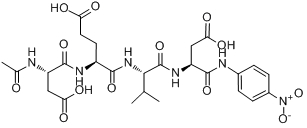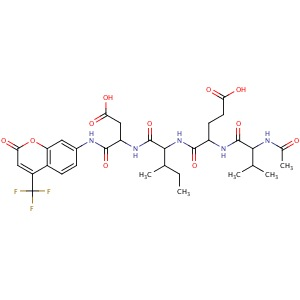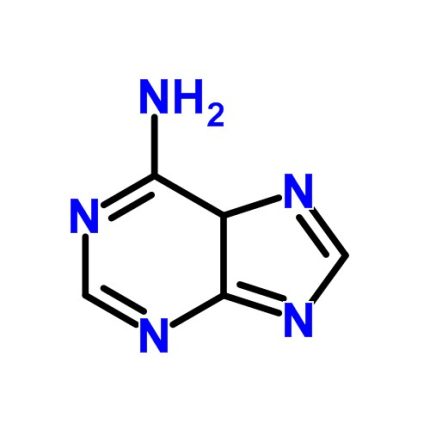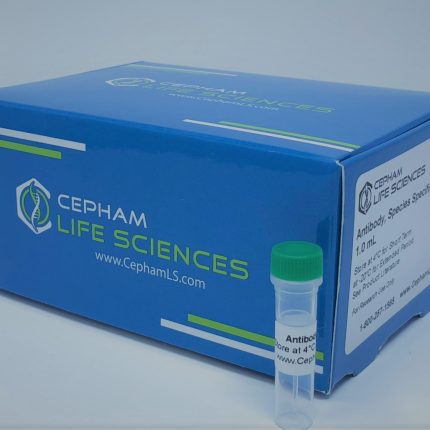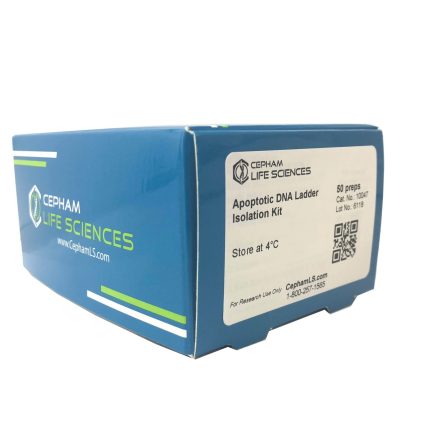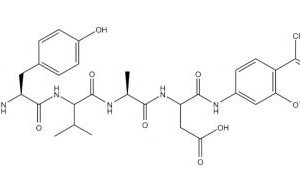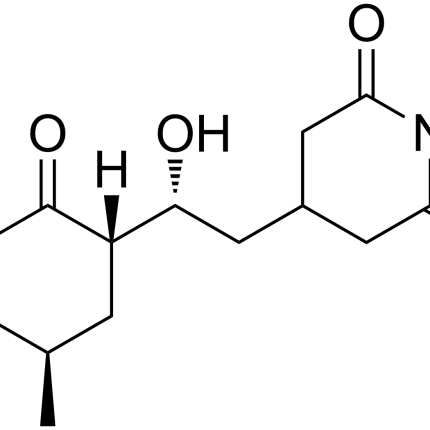Caspase-10 is an intracellular cysteine protease that exists as a proenzyme activated during the cascade of events associated with apoptosis. Caspases exist as inactive proenzymes which undergo proteolytic processing at conserved aspartic residues to produce two subunits, large and small, that dimerize to form the active enzyme. Four isoforms of caspase-10 have been described: caspase-10/a also known as Mch-4 (1), caspase-10/b also known as FLICE2 (2), caspase-10/c, and caspase-10/d. Caspase-10 contains two death effector domains and can be recruited along with caspase-8 into apoptosis signaling complexes associated with TNFR-like death receptors including Fas (1, 2).
Our Caspase-10 Assay Kit, Colorimetric provides a simple and convenient method for assaying the activity of caspases 10, which is based on the hydrolysis of the labeled substrate Ac-AEVD-pNA (N-Acetyl-Ala-Glu-Val-Asp-p-nitroanilide) by Caspase-10, releasing the pNA (p-nitroaniline) moiety from the substrate. The released pNA has the max absorbance at 405 nm (εmM = 10.5) and its concentration is calculated by measuring the absorbance values at 405 nm or from a standard calibration curve prepared using the pNA Dye Standard, using a microplate reader or spectrophotometer.
The assay can be performed in 100 µl volume in a 96 well plate using an ELISA plate reader or in 1 ml volume and measured in a spectrophotometer, using quartz cuvettes, since plastic cuvettes attenuate the absorption at 405 nm. Comparison of the absorbance of the released pNA from an apoptotic sample with an uninduced control allows determination of the fold increase in Caspase-10 activity.



